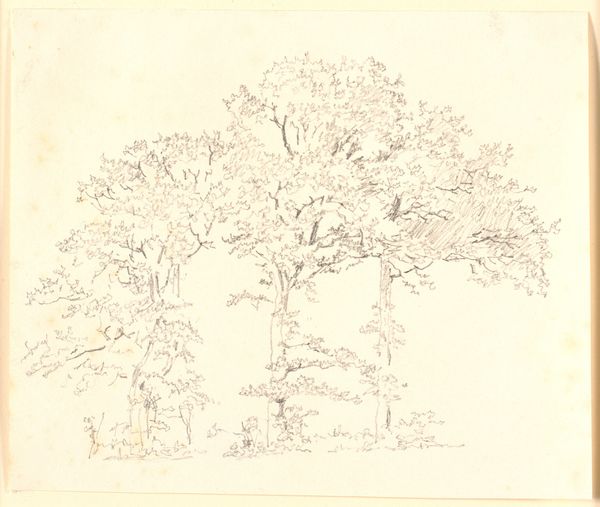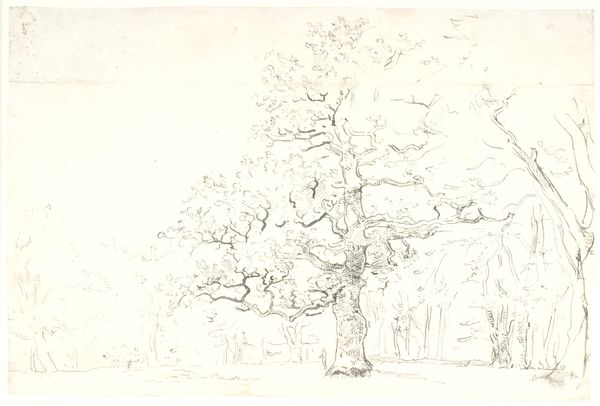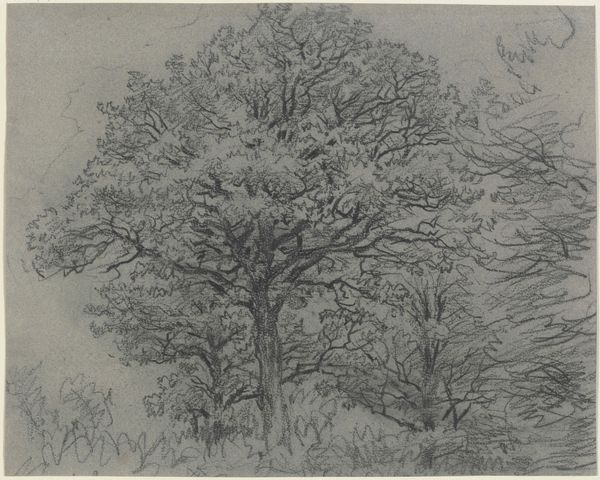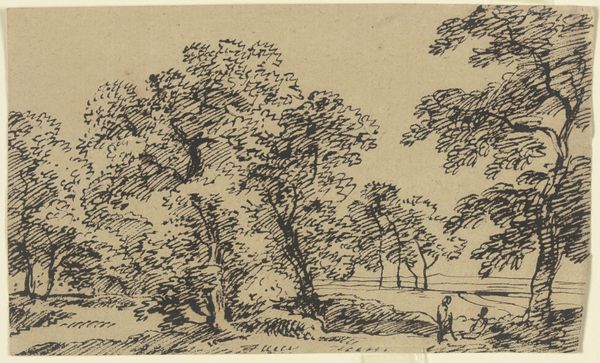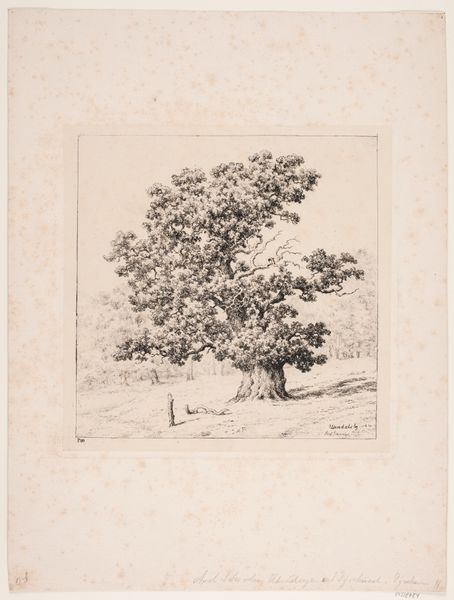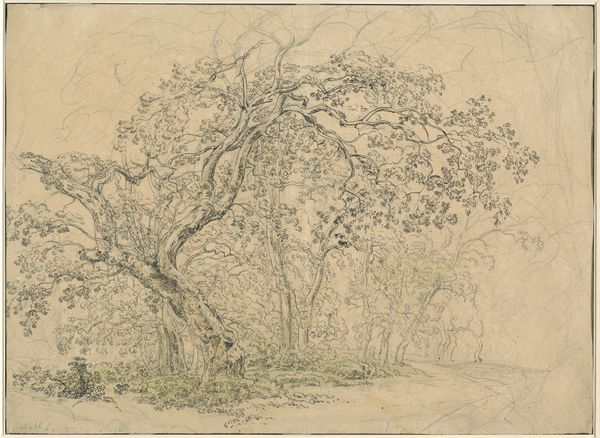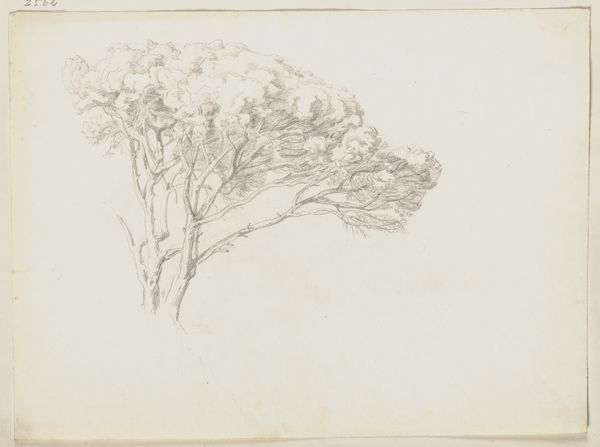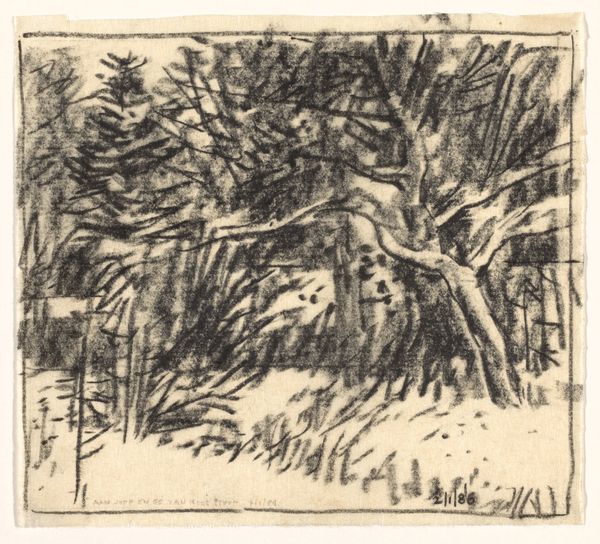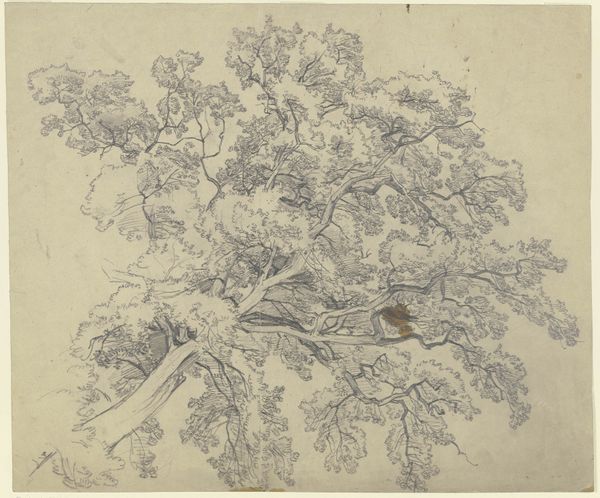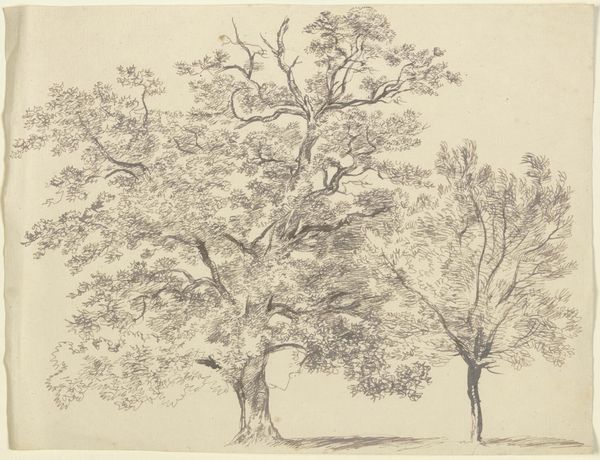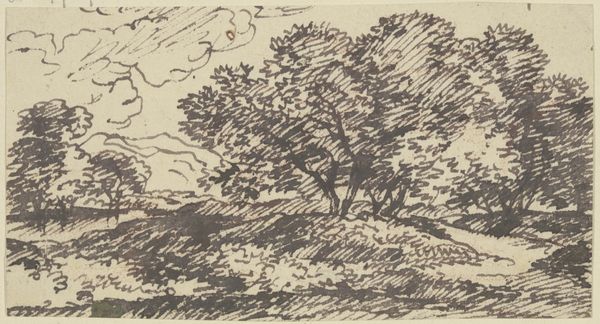
drawing, paper, ink
#
landscape illustration sketch
#
drawing
#
pen illustration
#
pen sketch
#
landscape
#
paper
#
ink
#
ink drawing experimentation
#
pen-ink sketch
#
botanical drawing
#
line
#
pen work
#
sketchbook drawing
#
botanical art
#
initial sketch
Dimensions: 245 mm (height) x 342 mm (width) (bladmaal)
Curator: Look at this ink drawing, "Studie af træer. Classens Have" or "Study of Trees, Classens Have" rendered in 1898 by Joakim Skovgaard. A simple yet striking image. Editor: It certainly grabs the eye with its stark simplicity. All that intricate hatching gives the tree a palpable weight, almost a melancholic feel. Curator: It’s fascinating to see Skovgaard, known for his monumental religious frescoes, engaging with such an intimate subject. This piece reveals another side of his artistic practice, more personal and observational. The Classens Have, a public park, offered a respite amidst urban life. Its creation reflected changing societal attitudes toward leisure and accessible green spaces. Editor: Yes, those layers of ink seem to build more than just the tree. There is a quality, as if Skovgaard is less representing, and more communing with its essence. Trees have been central in art throughout human history. Often embodying life, resilience, interconnectedness. Curator: And notice how the density of lines shifts. Where it’s more controlled in the foliage and looser around the base suggesting different forms and textures, mirroring Skovgaard’s connection to both naturalist artistic circles as well as emerging symbolic idioms. Botanical illustration at the time played a significant role, blending scientific accuracy with aesthetic appreciation for the natural world, reflected here. Editor: It reminds me of the Romantic painters—this intense observation feels like an effort to understand something fundamental, not just about botany but about existence. Curator: Precisely. It captures the cultural moment—a yearning to reconcile industrial progress with nature. The drawing becomes an archive of artistic and cultural tensions from turn-of-the-century Denmark. Editor: And by concentrating our vision so intently on a single tree, the artwork invites reflection on ourselves. Perhaps we are to find a symbolic bridge to what sustains us too. Curator: Indeed. It’s rewarding to view how a simple sketch made over a century ago allows us to contemplate the enduring symbolism and relevance of nature and our role within it. Editor: This piece reminds me that enduring art does not always demand complexity but offers new vantage points for what is right in front of us.
Comments
No comments
Be the first to comment and join the conversation on the ultimate creative platform.


